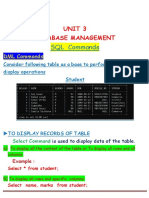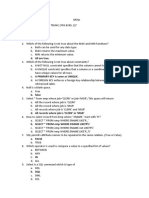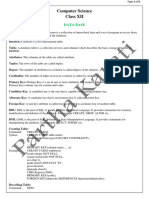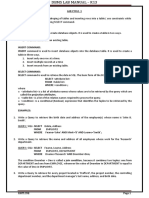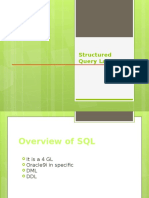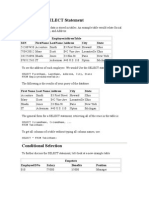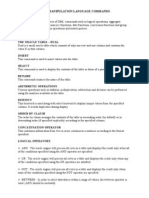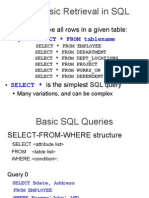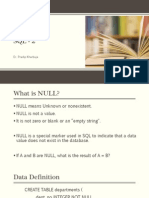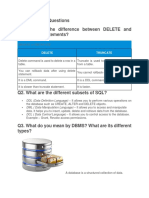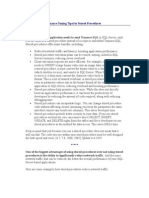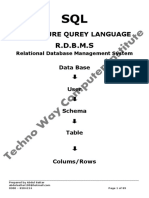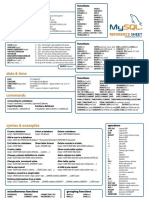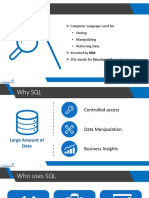0% found this document useful (0 votes)
3 views47 pagesUnit-2 Chapter-3 SQL Queries
The document provides an overview of SQL, including basic syntax, schema elements, and the CREATE TABLE command for defining tables and constraints. It discusses SQL query structures, including SELECT statements, aggregate functions, and the use of clauses like ORDER BY and GROUP BY. Additionally, it covers various SQL operations such as pattern matching, arithmetic operations, and multiset operations.
Uploaded by
SANDEEP PANDUCopyright
© © All Rights Reserved
We take content rights seriously. If you suspect this is your content, claim it here.
Available Formats
Download as PPTX, PDF, TXT or read online on Scribd
0% found this document useful (0 votes)
3 views47 pagesUnit-2 Chapter-3 SQL Queries
The document provides an overview of SQL, including basic syntax, schema elements, and the CREATE TABLE command for defining tables and constraints. It discusses SQL query structures, including SELECT statements, aggregate functions, and the use of clauses like ORDER BY and GROUP BY. Additionally, it covers various SQL operations such as pattern matching, arithmetic operations, and multiset operations.
Uploaded by
SANDEEP PANDUCopyright
© © All Rights Reserved
We take content rights seriously. If you suspect this is your content, claim it here.
Available Formats
Download as PPTX, PDF, TXT or read online on Scribd
/ 47



